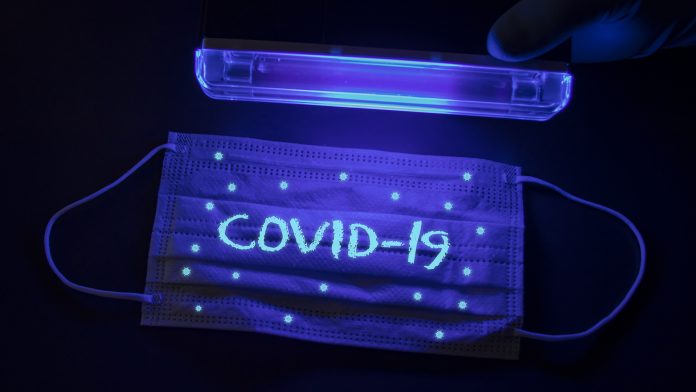
A University of Toronto Scarborough investigation has found that UV LED lights can destroy HIV and coronaviruses in just 30 seconds.
The team killed both viruses using UV LED lights, a common fixture in offices and public spaces; these lights can alternate between white light and decontaminating ultraviolet (UV) light. Due to them being relatively inexpensive and easy to implement in a range of public settings, UV LED lights may provide an innovative and cost-effective method for mitigating infection as we move out of the pandemic.
Christina Guzzo, the senior author of the study from U of T Scarborough, said: “We’re at a critical time where we need to use every single possible stop to get us out of this pandemic. Every mitigation strategy that can be easily implemented should be used.”
Eliminating infection with UV LED lights
UV LED lights use radiation to destroy viruses. Initially, the team examined the light on bacterial spores that are generally resistant to this type of radiation.
Guzzo said: “If you’re able to kill these spores, then you can reasonably say you should be able to kill most other viruses that you would commonly encounter in the environment.”
Astoundingly, within just 20 seconds of exposure to the UV lights, the growth of the spores dropped by 99%. Next, the team developed droplets that contained HIV or coronaviruses to represent the typical ways that people encounter these viruses, such as coughing, sneezing and bleeding.
The droplets were subsequently exposed to UV light and placed in a culture to analyse if the virus was still active. After just 30 seconds of exposure, the virus’s ability to infect was reduced by 93%. After testing the viruses at different concentrations, the team determined that samples with more viral particles were more resistant to the UV LED light; however, even for high viral loads, infectivity dropped by 88%.
Additionally, the team compared the performance of the UV LED lights to two heavy-duty disinfectants that are used in lab research, observing that the lights provided similar effectiveness and destroyed the viruses.
“I was really surprised that UV could perform on the same level as those commonly used lab chemicals, which we regard as the gold standard,” Guzzo said. “That made me think, ‘Oh, my gosh, this is a legitimate tool that’s really underutilised.'”
Advantages and limitations
Despite the impressive performance of the UV LED lights, a small amount of the virus was still left able to cause infection, meaning repeated UV exposure is essential to eliminate all of the remaining particles. However, this is as simple as flipping a switch, and changing a bulb is far easier than an air filtration system. The lights can also be fitted to any existing light fixtures and provide long-lasting protection.
“You could disinfect in a way that wouldn’t be infringing on people’s enjoyment of that everyday’ normal’ life that they long for,” Guzzo commented.
The lights also hold advantages over disinfectants, as a standardised dose of germicidal light can be administered each time, whereas disinfectants leave room for human error, and their chemicals and waste can end up in watersheds and landfills.
However, that doesn’t mean UV lights are completely safe, as UV radiation damages nucleic acid, and repeated exposure is harmful. Due to this, the researcher explained that the lights should be employed when public spaces are empty, such as when a bus is at the end of its route or when elevators are empty between floors.
Such technology is under-development bat Toronto-based start-up company Safe Antivirus Technologies, Inc. They are developing unique UV-LED lighting modules fitted with motion sensors that emit UV light when a room is empty and switch to normal light when there is movement in the room.
Guzzo concluded: “Worldwide events like the COVID-19 pandemic, as terrible as they are, hopefully, can still be learned from. One thing we learned is that this is an underutilised tool we should think more about implementing.”










